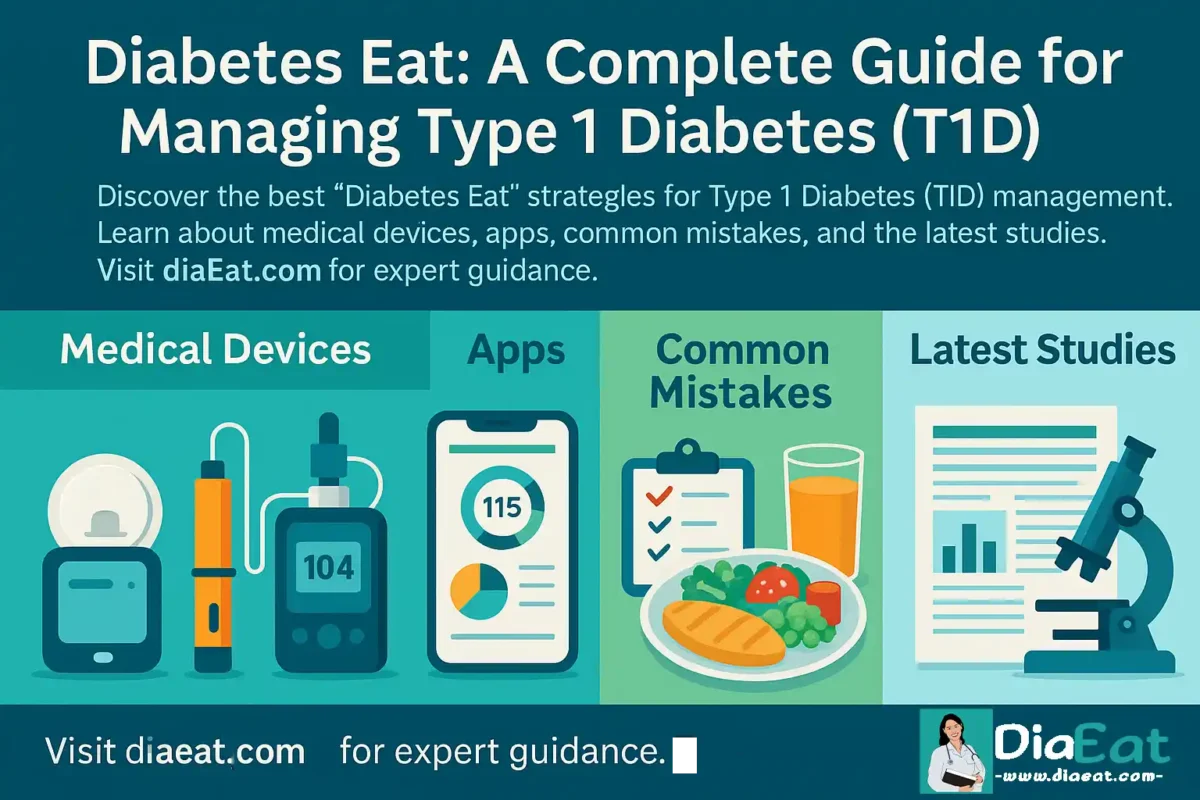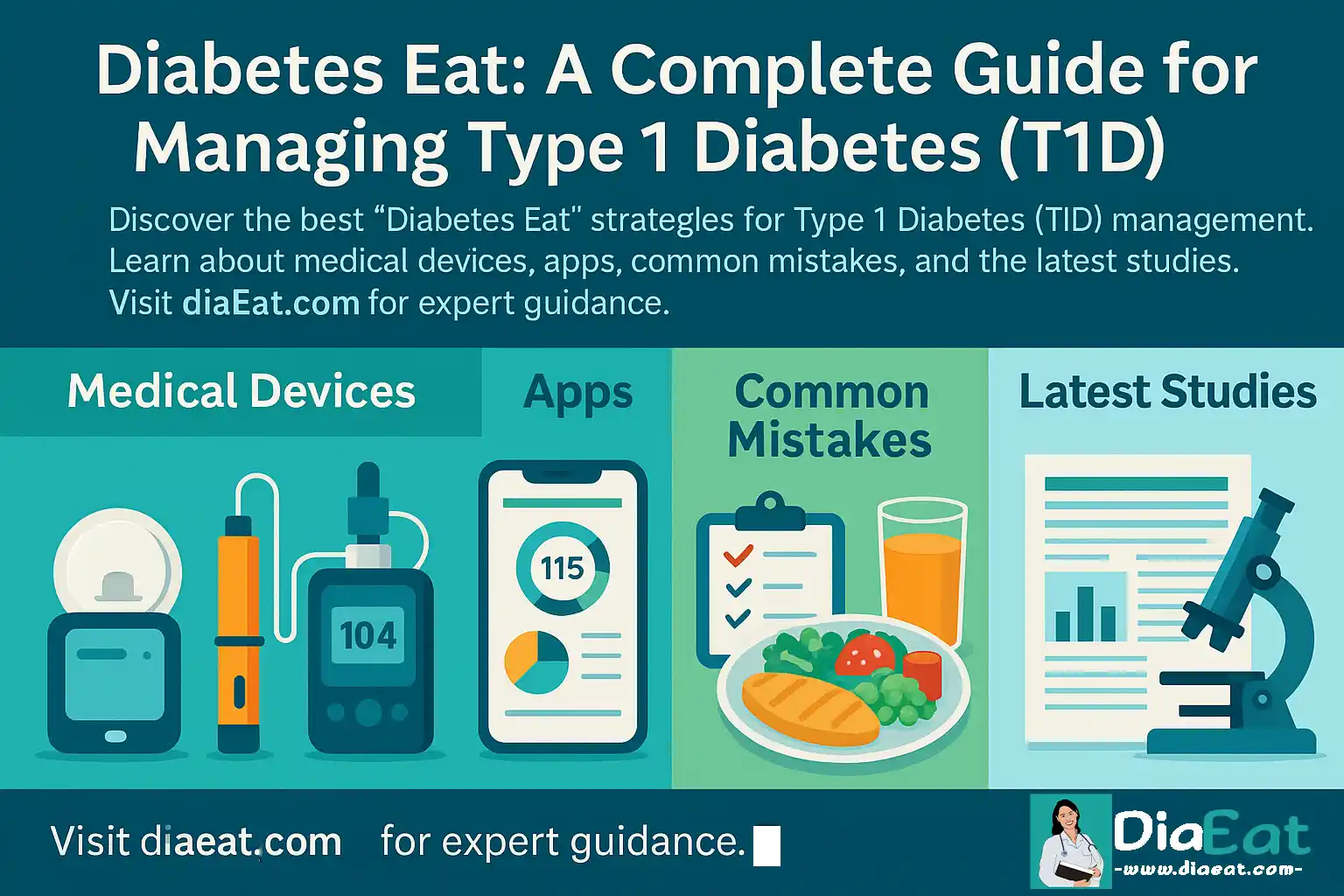Type 1 Diabetes (T1D): 10 Best Eating Strategies to Manage Blood Sugar
Meta Description:
Discover the best “Diabetes Eat” strategies for Type 1 Diabetes (T1D) management. Learn about medical devices, apps, common mistakes, and the latest studies. Visit diaEat for expert guidance.
Introduction
Type 1 Diabetes (T1D) is a chronic autoimmune condition where the pancreas produces little to no insulin. Managing blood sugar levels requires a careful balance of diet (“Diabetes Eat”), medication, and lifestyle adjustments. This article explores the best eating strategies, medical devices, apps, and common mistakes to avoid in diabetes care.
Understanding Type 1 Diabetes (T1D)
According to Wikipedia, Type 1 Diabetes (T1D) results from the immune system attacking insulin-producing beta cells in the pancreas. Unlike Type 2 Diabetes, T1D is not preventable and requires lifelong insulin therapy.
Key Facts About T1D:
- Onset: Usually in childhood or adolescence.
- Treatment: Insulin injections or pumps.
- Dietary Needs: Carbohydrate counting is crucial.
For more details, visit diaEat.
“Diabetes Eat”: Best Dietary Strategies for T1D
A well-structured “Diabetes Eat” plan helps stabilize blood sugar. Below are the 10 best eating strategies for T1D:
- Low Glycemic Index (GI) Foods – Choose whole grains, legumes, and non-starchy vegetables.
- Carb Counting – Essential for insulin dosage adjustments.
- Balanced Macronutrients – 40% carbs, 30% protein, 30% fats.
- Fiber-Rich Foods – Slows glucose absorption.
- Healthy Fats – Avocados, nuts, and olive oil.
- Portion Control – Prevents blood sugar spikes.
- Regular Meal Timing – Avoids hypoglycemia.
- Hydration – Water helps flush excess glucose.
- Avoid Sugary Drinks – Increases blood sugar rapidly.
- Mindful Eating – Reduces overeating risks.
Common Mistakes in Diabetes Management
Many people with T1D make these errors:
- Skipping meals → Hypoglycemia risk.
- Ignoring carb counting → Incorrect insulin dosing.
- Over-relying on processed “diabetic” foods → Often high in unhealthy fats.
- Not monitoring blood sugar frequently → Uncontrolled glucose levels.
Medical Devices for T1D Management
Modern technology helps manage T1D effectively:
| Device | Function | Brand Examples |
|---|---|---|
| Insulin Pumps | Delivers continuous insulin | Medtronic, Omnipod |
| CGM (Continuous Glucose Monitor) | Tracks glucose in real-time | Dexcom G6, Freestyle Libre |
| Smart Insulin Pens | Tracks insulin doses | InPen, NovoPen |
| Closed-Loop Systems | Automates insulin delivery | Tandem t:slim, MiniMed 780G |
Best Diabetes Apps (Free & Paid)
Here are 8 top-rated apps for diabetes management:
| App Name | Type | Features | Platform |
|---|---|---|---|
| mySugr | Free/Premium | Logbook, carb tracking, reports | iOS, Android |
| Dexcom Clarity | Free | CGM data analysis | iOS, Android |
| Glucose Buddy | Free/Premium | Blood sugar logging, insulin tracker | iOS, Android |
| Fooducate | Free/Premium | Nutrition tracking, food grading | iOS, Android |
| Diabetes:M | Paid | Advanced analytics, insulin calculator | Android |
| One Drop | Free/Premium | AI-powered coaching | iOS, Android |
| Sugar.IQ | Free | Personalized insights (Dexcom) | iOS, Android |
| Carb Manager | Free/Premium | Keto & low-carb tracking | iOS, Android |
Latest Research on T1D (2023-2024)
Recent studies highlight advancements in T1D treatment:
- Artificial Pancreas Systems – Improved automated insulin delivery (NIH Study).
- Stem Cell Therapy – Potential for beta-cell regeneration (Nature Journal).
- Immunotherapy Trials – Slowing autoimmune destruction of beta cells.
Conclusion
Managing Type 1 Diabetes (T1D) requires a structured “Diabetes Eat” plan, proper devices, and reliable apps. Avoiding common mistakes and staying updated with research ensures better glucose control. For expert guidance, visit diaEat.


